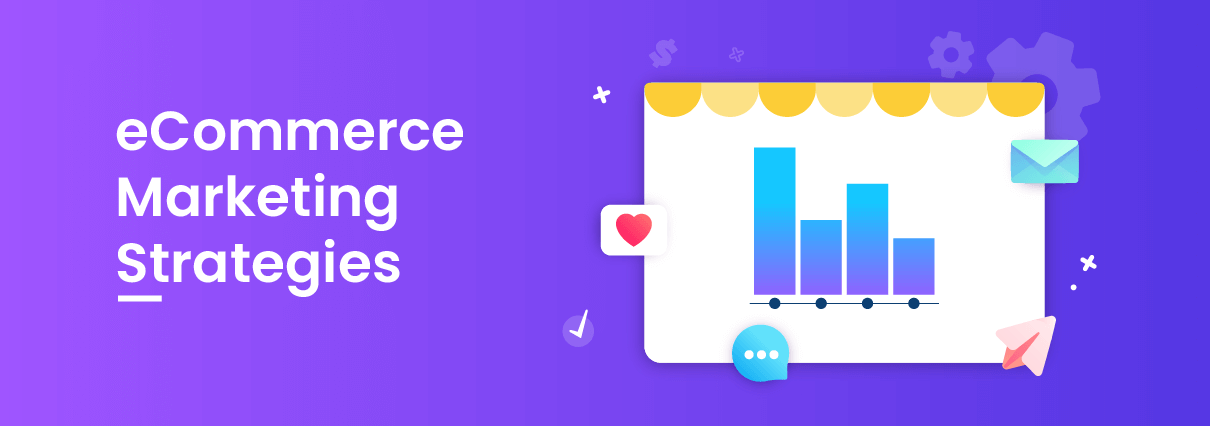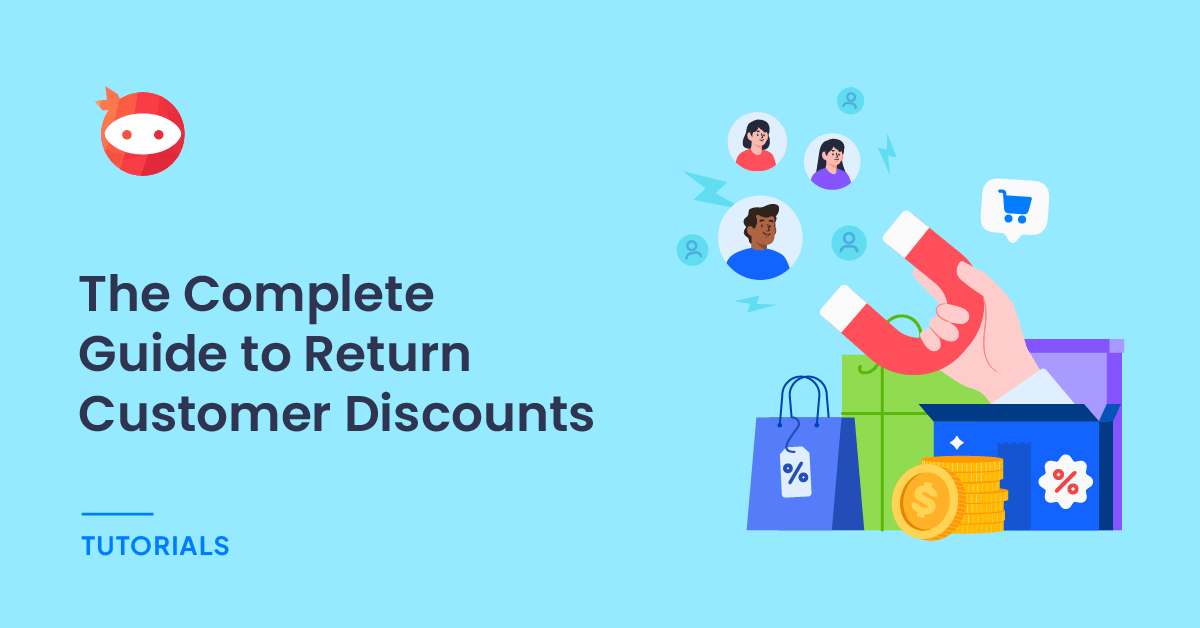The eCommerce business has never been smooth. It has drawbacks that prevent business owners from the steady growth of sales. The absence of sales leads to a decrease in revenue growth.
Eventually, eCommerce website owners conclude that they must either stop their business or search for solutions on how to save it.
The main issues that eCommerce website owners face are lack of traffic and lack of eCommerce marketing strategies that would help improve the level of conversions.
In this guide, you will find out 6 eCommerce marketing strategies that will help you with your eCommerce website progress.
Let’s start!
Ecommerce Marketing Basics
If you decide to launch an eCommerce store with an ecommerce website builder and sell some products, you will need to know the basics of eCommerce marketing.
Ecommerce marketing involves both inbound and outbound marketing strategies that aim to promote products you’re promoting. Inbound strategies stand for improving the performance of your eCommerce website and attracting potential customers organically.
Outbound strategies revolve around print advertising, billboards, taking participation at conferences, webinars, etc. For comprehensive insights on enhancing your site’s performance, consider exploring the ecommerce website optimization guide.
As you can see, eCommerce marketing strategies are the same as general strategies marketers apply in practice. Since outbound strategies have less impact on attracting potential leads through traffic, the rest of the information will be devoted to inbound (digital) eCommerce marketing strategies.
Keep on reading!
1. Content Marketing
You’ve heard the statement “content is king” – this is for a good reason. Content marketing helps you introduce your product/service to your target audience in a more friendly manner.
Sounds pretty easy, right?
Yes, if you create educational content that aims to help your target audience and solve the issues people have.
A brand with a big name, Gillette, creates educational niche-related content. For example, you can find a tutorial on how to shave a face.

You can see that the content creator promotes Gillette’s shaving foam right in the post. Pay attention to the fact that this kind of promotion looks very genuine. In other words, this piece of content aims to explain to potential customers how to shave a face in the first place.
You can take the same approach for your eCommerce website. And here is what you should do:
- Explore topics that have search traffic potential
When it comes to creating content for an eCommerce website, content creators try to cover topics that have nothing in common with their target audience. They want to drive more traffic to their sites ASAP. However, a “spike of hope” (a rapid bounce of traffic) changes with a “flatline of nope” (a drop of traffic):

As you have already guessed, you should target the topics related to your audience.
You can explore these topics using Google Keyword Planner tool. However, if you want to get more topic ideas with additional SEO metrics included, you should play with the Keywords Explorer tool from Ahrefs.

By reviewing the report called “Phrase match” you will be able to find phrase keyword ideas for your content. What’s more important, you can narrow down the results. Apply a few filters like “Keyword Difficulty” and “Search Volume.”
The final step is to brainstorm topics for your content taking into consideration your findings.
Other than that, make sure you create various types of content and mix it with visual elements.
- Focus your efforts on creating YouTube video content
Above mentioned brand Gillette owns a YouTube channel with 158K subscribers.

It ranks for niche-related target keywords.

Another benefit that you can get by running a YouTube channel is an opportunity to promote your products and website.

First things first, you should create high-quality video content. For this, you will need to use specialized tools for mastering video, like a free online video maker tool from Visme.
Among other things, you should pay attention to video and audio quality. Follow your video schedule. And solve your target audience’s issues.
2. Email Marketing
What is the first stage of any email marketing campaign?
The first stage is creating an email list. Afterwards, you start working with this email list and drive traffic to your eCommerce website.
However, it isn’t as easy to grow your email list. You need to nudge the visitors of your eCommerce website to get them subscribed. How to do this?
You can offer something in return. For example, discounts, SWAG, free content, etc. When your email list starts growing you should take care of creating an onboarding sequence. It will help you get your subscribers interested in your eCommerce site. Engage with people and you will see that they will return to your website and convert into paid customers.
3. Social Advertising
If you happen to sell niche products on your eCommerce site, you should use social advertising practically. This way of promoting your products is very lucrative. It doesn’t require you to invest big money and it allows you to measure return on ad spend without any problems.
Also, you will be able to control how you spend your money on social ads. You can do this by monitoring the number of sales you get. Thus, if the number of sales doesn’t satisfy your expectations, you can stop investing money in ads.
Where can you run social ads?
Practice shows that Facebook is the first place to go where businesses run their advertising. There are plenty of tutorials on how to run Facebook that you can find on the web.
To summarize, you have to follow these pieces of advice:
- Take care of installing conversion tracking pixel
- Use ads as the tool to communicate a brand story
- Explore new customers with a lookalike audiences
- Amplify existing customer relationships with custom audiences
- Apply dynamic and multi-product ads
- Launch general retargeting campaigns
To succeed with advertising on Instagram you should run experiments. It means you should determine which ad would work for your eCommerce website better by creating A/B testing advertising campaigns.
If you want to have more chances to get lucky with the ads on Instagram, follow these four tips:
- Include visual elements (video or image)
- Don’t neglect placing ads in stories and feed
- Use location targeting by showing certain products across specific regions
- Add a question to the ad copy
4. Google Advertising
Lots of eCommerce website owners prefer to get their products shown on the first page of Google by using advertising. If you can’t wait to get tons of traffic to your eCommerce website fast, you should stick to Google ads.
Google advertising isn’t free of charge. So, you must be sure that your budget can allow you to pay extra money for the ads.
There are three main types of Google ads:

- Google shopping ads
You can see this type of advertising displayed on Google in the following way.
Google shopping ads are pretty compelling because they can be displayed above organic results for commercial inquiries. Plus, they can include images.
- Display retargeting
If you want to target those people who have visited your eCommerce website but left it for some reason, you should use retargeting.
Retargeting aims to remind your potential customers about your eCommerce website convincing them to visit it again and buy from you.
How does it work?
There is a pixel code that you must install on your eCommerce site. The purpose of this code is to let Google know when anyone visits your website. And when the person visits other eCommerce websites displayed by Google advertising, Google will retarget this person to your ad.
- Search advertising
One of the most common types of advertising on Google is search ads. To make your products shown using this form of advertising, you should explore target keywords first of all.
You might wonder how you can identify the keywords that would be related to your target audience?
Fortunately, you don’t need to reinvent the wheel. You need to discover the keywords that your main competitors bid on. These keywords will work for you a hundred percent. Keep in mind that your competitors wouldn’t invest their money in targeting those keywords that don’t sell.
To explore these keywords you can use a report called “PPC keywords” available in Content Explorer tool from Ahrefs.

Along with the keywords, you will get the information on what landing pages get the most traffic and what ad copy has been used.
5. Affiliate Marketing
Affiliate marketing is widely used by many eCommerce websites that move their business in B2B and B2C directions. This activity shows pretty good results and these companies earn solid money with this type of marketing.
Affiliate marketing is based on building cooperation with other people. These people must promote your products, pushing your potential customers to buy them. Your part of the partnership is to pay commission in return.

Let’s take a look at the way affiliate marketing would work for your eCommerce website.
- Your partners promote your site or products you sell
- Potential customers click an affiliate link and visit your website (buy products)
- Pixel code tracks the fact of product buying
- You have to pay commission to your partners
Not bad, right?
The only issue that might occur is the absence of potential partners you could deal with. How to find them?
With the help of Google, you will be able to find a bunch of partners. Type this search command:
“top {your niche} bloggers/influencers”
This search command will help you find a variety of curated lists full of potential candidates you could build a partnership with.
Now, you will have to connect with these influencers and incline them to build an affiliate marketing partnership with you.
Follow these pieces of advice:
- a) Make sure your product deserves to be promoted by these influencers (it must be super-good)
- b) Promotion shouldn’t be difficult for your partners
- c) Your commission must be generous
The core principle of affiliate marketing is to build relationships that would be beneficial for both parties. Therefore, you should be loyal to your affiliate partners and they will help you double your sales. Eventually, you will have an opportunity to focus on generating revenue while your partners will take care of driving more customers to you.
6. SEO
Finally, one of the most important strategies for your eCommerce website is SEO. Why do you need to optimize your eCommerce website?
With the help of optimization, your eCommerce website landing pages will rank high on Google and you will be able to generate more traffic. This traffic will convert into direct sales.
Search engine optimization of your eCommerce website starts with keyword research. You must explore what search queries your potential customers type on Google.
Also, pay attention to what search intent stands behind the queries your audience uses. It must align with your product/category pages. The last two directions optimization moves on are on-page and off-page SEO.
On-page SEO is all about optimizing on-site elements. Off-page SEO requires building backlinks for your pages.
To Sum Up
Ecommerce marketing is a powerful tool to generate sales on your eCommerce website.
You have just got familiar with the six advanced eCommerce marketing strategies. Each of these strategies has its benefits. But you should choose a few of them to be focused on at the beginning of your eCommerce business journey.
You might wonder which strategy to choose for yourself.
Your target audience can help you with this. Ask yourself “who are the people I am selling my product to?” and “where can I find my leads?” – the answers to the questions let you know which strategy to take.
If you know more cool eCommerce marketing strategies, feel free to share them in the comments.

